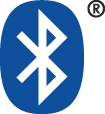Get rid of the cable clutter, use Bluetooth
Have you noticed the clutter you cause when you install a new computer
? And even more clutter as you attach all kinds of peripheral devices to it, all of them super-duper important?
It seems that this is the one thing that hasn’t changed even as electronic devices get smaller and faster: cable clutter. Just try connecting various devices together, USB, power, video and more.
Some years ago, there seemed to be a solution in sight: a new wireless communication standard, called Bluetooth. Named after a late tenth-century king, Harald Bluetooth of Denmark, who managed unify various the tribes of Denmark and Norway.
The idea behind this short-range wireless technology is to allow many different devices to wirelessly communicate with each other, such as personal computers, PDAs, cell phones, headsets and more. This would eliminate the need for communication cables, leaving workspaces less tangled.
Don’t confuse Bluetooth with the more commonly known WiFi networks such as 802.11g or the newer ‘N’ class of wireless networking products. Those devices require more power and hence they cost more per device. Bluetooth is designed to use inexpensive, short-range wireless chips that still allow devices to communicate at fast data rates. In addition, many Bluetooth devices can communicate amongst themselves. In comparison, trying to connect a cell phone to an 802.11g WiFi network is technically daunting. The ability for devices to communicate without a central computer to act as a hub has far-reaching applications - all without needing a PC in the picture.
The concept behind Bluetooth is simple: allow any equipped device to communicate its capabilities to other Bluetooth devices in range. Once a simple ‘pairing’ process is complete, devices are aware of each other’s capabilities. For example, pairing a cell phone with a pair of Bluetooth stereo headphones (like the Motorola S9) allows a user to play music and receive calls. This is all using the headset’s controls, leaving the cell closed in a pocket, hands-free. Having used this product combination myself, I can attest that it rates very highly in both practical usage and that ever-elusive ‘cool’ factor that new gadgets inspire in onlookers.
There are three classes of Bluetooth devices. Each of them having a greater range (power level) than the others, either Class 1, 2, or 3. The most common is Class 2. It has a range of 10 meters, which is enough for most home or office devices to communicate. The most numerous Bluetooth devices available to consumers now are cell phones. Almost all of them in the last few years have included Bluetooth. Some cell users might be unaware that their phones have this hidden capability, which allows them to do far more than just adding a headset to take or make calls. Bluetooth allows some PDAs and cells to share contact lists, share video clips, and much more. Imagine that you can dictate a podcast with a Bluetooth headset, all while on the go. Not all cells have the latest Bluetooth versions, so if you are in the market for a high-end cell, check the version of Bluetooth it has you may be surprised.
Bluetooth Specification 2.1 was recently adopted for modern devices as of July 2007, and this standard included the ‘Simple Secure Pairing’ feature. Compared to previous releases, it greatly improved the ease of matching up Bluetooth devices. The newest standard is backward-compatible with older Bluetooth devices all the way to the old 1.1 standard, so chances are old Bluetooth headsets will still work fine with newer cells.
Not so long ago, some users were toting nearly a half-dozen portable gadgets on their belts, and wearing a headset, to boot. None of these devices could communicate easily with each other. Imagine: a Blackberry for e-mail, a PDA for notes, a cell phone, a pager and a digital camera. Imagine if all those devices could have shared their data and resources wirelessly they could become their own mini-network.
In the near future, Bluetooth devices will continue to pop up on the consumer market. Visitors to the official Bluetooth web site can see an ever-increasing range of products becoming available, including printers that will accept images from your wireless Bluetooth device - no computer needed. Even if you want to add your PC to the mix, it’s quite simple. Belkin makes an inexpensive Belkin Bluetooth USB Adapter F8T001. Before you splurge: this one is only version 1.1-compatible.
Of course, the ride isn’t all smooth and straight, as some curves remain in the road. The pairing process, by which two devices establish communications with each other, can still be hit-and-miss with certain combinations of device and manufacturer. As well, it’s hard to easily tell which version of Bluetooth a device carries. Efforts by the Bluetooth Special Interest Group (who host the Bluetooth.com site) are continuing to make using Bluetooth-enabled devices easier. The addition of pictographic ‘icons’ for distinguishing types of devices has helped, and it will hopefully happen that very soon Bluetooth will become the simple connective web that unites every portable device on the market.

